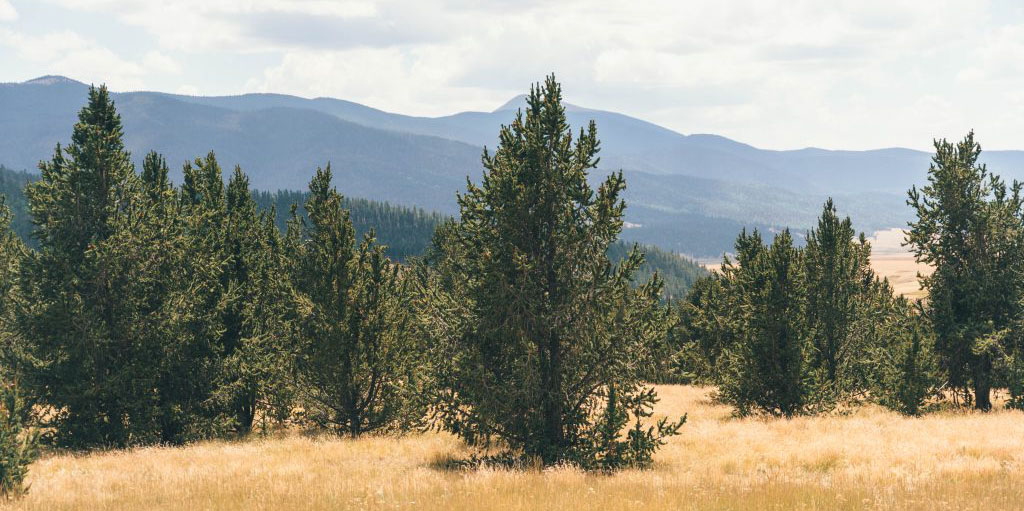Planting Memorial and Celebration Trees in New Mexico
Why We Plant Trees in New Mexico
New Mexico’s diverse landscapes range from sweeping deserts to high-altitude forests, making it a unique location for tree planting and reforestation efforts. With its breathtaking scenery and vital ecosystems, planting a tree in New Mexico contributes to restoring natural habitats, protecting watersheds, and combating climate change. Whether commemorating a loved one or supporting environmental restoration, each tree planted helps preserve the beauty and ecological health of the Land of Enchantment.

The Ute Park Forest Fire
In 2018, the Ute Park Fire burned through approximately 36,740 acres in northern New Mexico, primarily in Colfax County. The fire destroyed grasslands, woodland areas, and parts of Philmont Scout Ranch, one of the most beloved outdoor recreational areas in the region. Though no lives were lost, the fire caused significant damage to forests, impacting wildlife habitats and increasing the risk of soil erosion and flooding. Reforestation efforts in the affected areas are crucial to restoring the natural balance, stabilizing the landscape, and preventing further environmental degradation.
The devastation left behind by the Ute Park Fire is a stark reminder of how quickly forests can be lost. Years on we see how long they take to recover without intervention. By supporting tree planting programs in New Mexico, you are directly contributing to the restoration of landscapes ravaged by fire, helping to prevent soil erosion, improve water retention, and provide habitats for displaced wildlife. Reforestation in these areas not only brings back the lush forests that once thrived but also strengthens the resilience of ecosystems against future wildfires. Every tree planted is a step toward healing the land, restoring natural beauty, and safeguarding the environment for generations.
New Mexico’s Native Tree Species and Cibola National Forest
Cibola National Forest is one of New Mexico’s most ecologically significant landscapes, offering a striking contrast between arid deserts and lush, high-altitude woodlands. This vast expanse provides a haven for countless plant and animal species, supporting biodiversity while serving as a critical water source for nearby communities. The forest’s rugged terrain and diverse elevations create an ideal environment for a variety of tree species, many of which have adapted to New Mexico’s extreme conditions.
Beyond its ecological value, Cibola also offers unparalleled recreational opportunities, drawing visitors for hiking, wildlife observation, and scenic exploration. Preserving and expanding its tree cover is essential to mitigating the effects of climate change, protecting watersheds, and maintaining the cultural and natural heritage of the region.
Cibola National Forest and National Grasslands span more than 1.6 million acres across New Mexico, offering a rich and diverse range of tree species that thrive in the region’s unique climate. This forest is essential for preserving biodiversity, supporting wildlife, and protecting watersheds. Some of the native tree species found in Cibola National Forest include:
Ponderosa Pine (Pinus ponderosa): A fire-resistant species that plays a crucial role in forest recovery.
Douglas Fir (Pseudotsuga menziesii): Found in higher elevations, providing critical habitat for wildlife.
Piñon Pine (Pinus edulis): A resilient species that supports local ecosystems and is vital to New Mexico’s landscape.
Gambel Oak (Quercus gambelii): A drought-tolerant hardwood tree that helps prevent soil erosion.
Rocky Mountain Juniper (Juniperus scopulorum): A hardy tree that thrives in New Mexico’s dry conditions.
Support the Future of New Mexico Forests
Planting a tree in New Mexico with The Trees Remember supports active reforestation efforts in fire-affected areas and degraded landscapes. These projects focus on selecting native species best suited for the region, ensuring long-term ecological benefits.